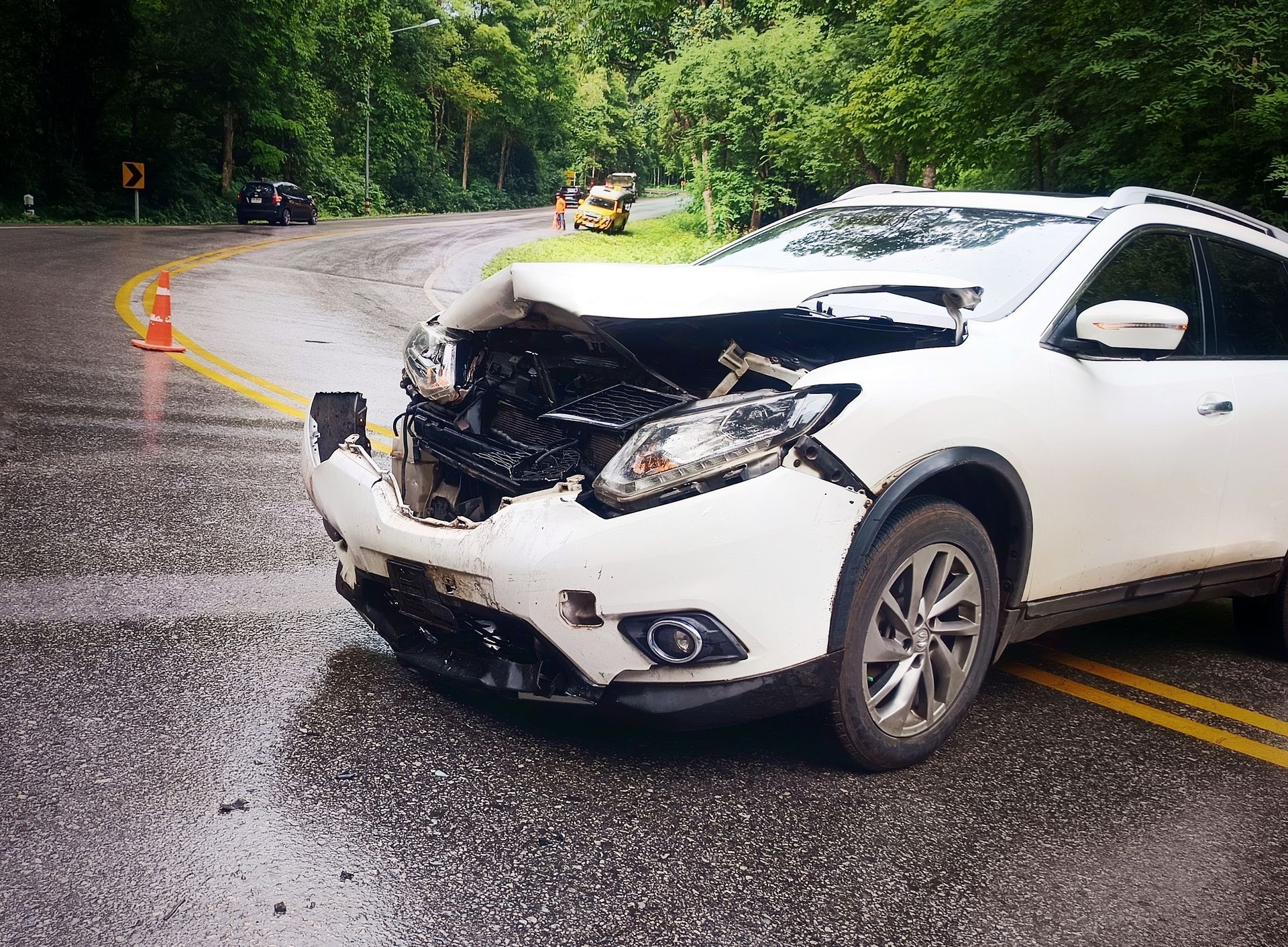Sargon Law Blog
Recent Blog Posts
A Complete Guide to the Personal Injury Claim Process in Arizona
When one party harms another through negligence or bad intention, the person at fault is liable for the resulting damages. Victims of personal injuries in Arizona can access justice and compensation through the civil court system. However, the personal injury claim process is sometimes complex, especially in cases resulting in severe injuries and substantial damages. Understanding the process and working with an experienced team of attorneys is the first step in rebuilding your life after injury.
Who Can Access the Personal Injury Claim Process in Arizona?
Personal injury, or tort, law covers a variety of cases, and most arise from a negligent act. The most common are auto accidents, including collisions involving cars, commercial trucks, motorcycles, rideshare companies, pedestrians and bicyclists. Because Arizona uses a fault-based system for auto accident claims, the party responsible for the accident is liable for the damages.
Other examples of personal injury claims include:
- Premises liability: When a property owner fails to maintain safe conditions for visitors and someone suffers an injury, the owner is responsible for the victim's losses. Slip-and-fall accidents fall under the umbrella of premises liability.
- Defective products: According to the legal concept of product liability, manufacturers and traders are responsible for producing and distributing faulty products. Therefore, they are liable for any damage their products cause.
- Animal attacks: Dog bite cases are the most common form of animal attack. Arizona law applies the concept of strict liability to these claims, making the dog owner nearly always liable for the resulting damages.
- Wrongful death: Any personal injury resulting in death could potentially be a wrongful death claim. Arizona law allows certain family members, starting with the deceased's surviving spouse, to file a claim for damages.
Personal injuries do not always result in physical harm. Damage to a person's psychological well-being or reputation may also warrant a claim. Additionally, intentional harm, such as assault or battery, could result in both criminal and civil charges.
What Are the Basic Stages of the Personal Injury Claim Process?
Several factors can influence the process of filing a personal injury claim, but these six basic steps are common.
Stage 1: Contact an Experienced Attorney
Some elements of a personal injury claim are time-sensitive. Contacting an attorney as soon as possible can save time and help you build a stronger case. An experienced lawyer can contribute to the process in many ways:
- Handling all communications with the insurance company
- Gathering the evidence needed to support your claim
- Investigating the accident to find evidence of negligence
- Managing all the administrative elements of a personal injury claim
- Providing compassionate support and aggressive protection of your rights
A legal representative lifts the burden of building a solid case to allow you to focus on recovering from your injuries. During your consultation, you will discuss the details of the incident and your legal rights through the civil court system.
Stage 2: Gather Evidence To Prove Negligence and Damages
Once you agree to work together, the investigation is the next step in the personal injury claim process. As the person filing the claim or lawsuit, you are responsible for proving the other party's negligence. Evidence you can use to establish your claim includes:
- Documentation from the scene, including video and photographs
- An official police report
- Statements from eyewitnesses
- An accident reconstruction analysis from an expert
- Electronic crash data for a car accident
To prove damages, you need evidence that shows you suffered injuries and losses as a direct result of the other party's actions. For example, medical records and billing statements can prove the defendant breached a duty of care owed to you, resulting in the injuries you sustained.
Stage 3: Draft a Demand Package and Start Negotiations
Once your attorney completes the investigation and has all the evidence necessary to prove negligence and damages, they can draft your demand letter and form the demand package. This includes detailing the facts of your case, explaining why the other party is liable for damages and providing supportive documentation to prove every element of your claim, including damages. This is the first step in negotiations.
The insurance company will then have the opportunity to respond by accepting your settlement offer, providing a counter offer or declining to settle. If they accept the offer, your attorney will draft an agreement allowing you to collect the funds. If they reject or offer an unfair settlement, your attorney will likely start the process of filing a lawsuit.
Stage 4: File a Lawsuit and Begin Discovery
The lawsuit stage of the personal injury claim process is not always necessary and does not mean you will go to trial. An advantage of having legal representation is their experience completing and filing all the paperwork required to avoid delays. After filing, the discovery phase can begin.
During discovery, both parties disclose non-privileged information to one another. Your attorney can draft interrogatories for the defendant to answer under oath. They will also ask questions during depositions and represent you during questioning. They request admissions, asking the other party to validate certain facts, and productions, asking for physical evidence about the case.
Negotiations can continue throughout the discovery process. An experienced attorney will prepare your case for trial while negotiating a settlement. Sometimes you can bring in a mediator to help both parties come to an agreement.
<h3>Stage 5: Pre-Trial Hearings
As you move closer to the trial in the Arizona personal injury claim process, your attorney may file pre-trial motions to resolve various common issues:
- A motion for summary judgment asks the judge to make a ruling based on facts validated by both sides.
- A change of venue is a motion commonly filed by the defense to request moving the case to a different location.
- A motion in limine asks the court for permission to admit specific evidence.
- A motion to compel asks the court to push the other party to do something they should but have not done.
As this process progresses, you may reach a settlement at any point. Your attorney will advise you when it is best to settle and when you would benefit from moving on to the trial phase.
Stage 6: Trial and Judgment
Most personal injury cases do not go to trial because insurance companies prefer to avoid a costly court case. Therefore, they will often settle first, even after lengthy negotiations. If you go to court, a judge or jury will review all the evidence, make a fault determination and enter a judgment. Afterward, your attorney handles the collection and distribution of your award.
What Do You Need To Prove Negligence in the Personal Injury Claim Process?
Proving negligence is an integral part of most personal injury claims. To establish fault, your attorney will gather and provide sufficient evidence to prove the four components of a negligence claim:
- Duty of care: You must show that the defendant was responsible for acting with reasonable care for your safety. For example, anyone driving on shared roads owes a duty of care to other drivers.
- Breach of duty: You must show that the defendant breached their duty of care. Violating traffic laws would constitute a breach of responsibility because it endangers others.
- Causation: Next, you should show that the defendant's actions directly caused the accident and prove that the accident resulted in your injuries.
- Damages: Finally, you must connect the accident and your injuries to the resulting damages you claim.
When each component is present and valid, the insurance company will struggle to skirt responsibility. However, other laws can impact your case.
What Arizona Laws Impact Personal Injury Claims?
Three laws are fundamental in the personal injury claim process: the statute of limitations, the tier system for damages and the pure comparative negligence rule. Your attorney will explain each in detail and how they may affect your case, but it helps approach your claim with a basic understanding.
Statute of Limitations
The statute of limitations dictates a deadline for filing a lawsuit. For most personal injury cases in Arizona, the rule states you have two years from the date the injury occurred. However, there are exceptions. If the defendant is a minor, the clock does not start until they turn 18. Additionally, if the defendant leaves the state after the accident, the clock stops ticking until they return.
The two-year statute of limitations also applies to wrongful death lawsuits. However, the clock begins when the person dies, which is not always on the same date as when the accident occurred. Additionally, the deadline changes for cases involving dog attacks or government entities. In those cases, you have one year to file.
Damages Tier System
Arizona has a special rule that applies to damages for personal injury claims. In most cases, you cannot specify the exact dollar amount you want to recover. Instead, you must stipulate what tier level you meet:
- Tier 1: $50,000 in damages or less
- Tier 2: $50,000-$300,000
- Tier 3: $300,000 or more
During the investigation, your attorney will identify all recoverable damages to value your claim and choose the correct tier adequately. The tier you are in will impact your ability to go through the discovery phase of the pre-trial process.
Pure Comparative Negligence
A common defense to a personal injury claim is a return accusation of guilt. For example, if you suffered injuries in a slip-and-fall accident on someone else's property, they may respond to your claim with the argument that you knew or should have known about the hazard that caused your fall.
When an Arizona civil court finds both parties liable for the accidents and resulting injuries, it applies the pure comparative negligence rule to the personal injury claim process. In practice, the court will assign a percentage of fault to each side and reduce your recoverable damages by an amount equal to your portion of the blame. For example, if you are 20% liable for the accident and awarded $10,000 in damages, you can only recover $8,000. The types of recoverable damages will vary from case to case.
What Damages Can You Recover During Negotiations?
The law refers to any losses you incur due to the other party's actions as compensatory damages. These can include economic and non-economic damages. Less commonly, you may also receive punitive damages, but only if the circumstances call for it.
Compensatory Damages
Economic damages refer to the direct financial impact on your life. Non-economic damages address how the accident affected your emotional and mental health. Examples of economic and non-economic damages include the following:
- The cost of medical expenses, including current and future bills you receive for past and ongoing treatment
- The value of lost income caused by missing work or losing earning capacity
- The cost of repairing or replacing damaged property
- The physical pain and suffering you endured because of your injuries and treatment
- The loss of enjoyment in life
Most cases have unique damages. For example, in a wrongful death case, the family may demand compensation for funeral expenses and loss of inheritance and benefits. Having a legal representative during the process increases your chance of adequately valuing your losses and receiving a fair settlement.
Punitive Damages
Only in cases where the defendant exhibits gross negligence or malicious intention may you receive punitive damages. The purpose is not to compensate for a loss but to punish the defendant further for their actions. For example, intentionally defaming someone or driving under the influence and causing a fatal accident may warrant an award for punitive damages.
When Should You Contact an Attorney for Guidance Through the Personal Injury Claim Process?
If you suffered physical or emotional harm because of someone else's actions, there is no time too soon to contact an experienced personal injury lawyer at Sargon Law Group. We believe in providing compassionate understanding with aggressive representation and aim to achieve results for our clients. You can rest and focus on recovery while a team of experienced personal injury attorneys in Phoenix handle the claim process. Contact Sargon Law Group in Phoenix, Arizona, to schedule your free consultation today.





